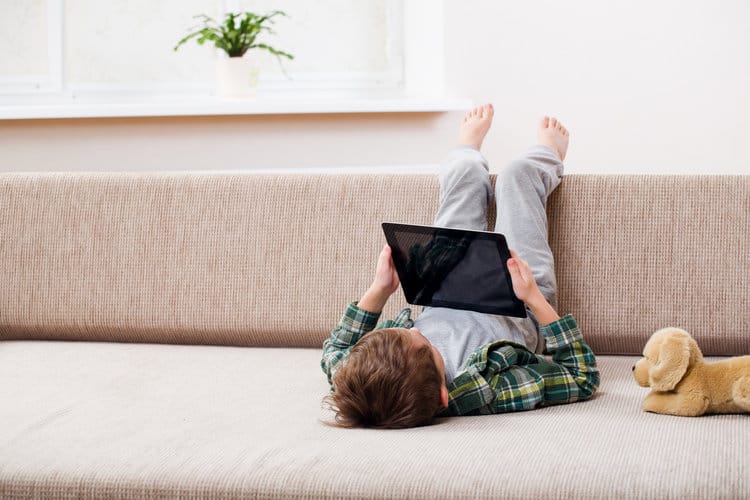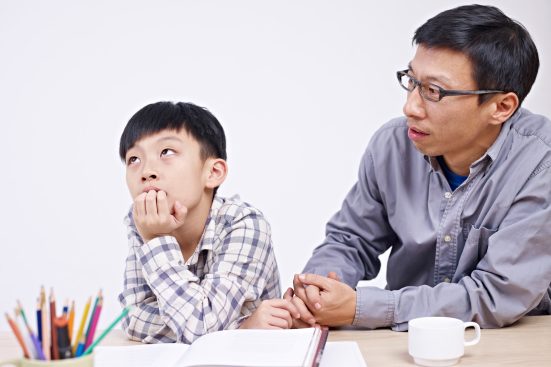UK based research group Child Wise conducted research last year showed that children are watching an average of 3 hours a day watching youtube videos. Most commonly, they are watching music videos, gaming videos, “funny” real life content, videos showing pets and animals, “how to” videos and sport.
This raises the question of how appropriate these videos are for children. It’s hard to tell. None of this content is “rated” as G, PG, M etc in the same way that commercially produced television has been in the past. And with more than 300 hours of video being uploaded to youtube every minute, my guess is that external ratings guides like this are going the way of the dinosaur.
This means that as a society we are going to have to find new ways of monitoring, discussing and – when appropriate – restricting video content for children.
Here are four questions for adults to ask children to help start that process. These questions could be used to guide a general classroom conversation (or the basis of a journal/project for older children) or one on one in a therapy/counselling room with a child you suspect may be accessing inappropriate content.
1. Have you ever seen something on youtube that you wish you hadn’t seen, or something which made you feel worried or uncomfortable?
This question is designed to help us know if children have come across content which we may need to discuss with them. It’s amazing how often children will have seen something disturbing yet not bring it up with us until we ask them directly.
One child I worked with recently saw a video about someone predicting that the world would end on a certain date a few months in the future. He was very frightened that his life was about to end – and yet still didn’t tell any adults about it until directly asked the question listed above.
There are benefits in having this conversation either in a group setting or one on one with children. If as professionals working with children we can raise this topic with a group of children, it helps other children to start to share their concerns and we can address any issues which have arisen. If we do it one one one, we will often uncover important information to help the child express concerns they may not be spontaneously raising.
2. If you DO feel worried, uncomfortable, guilty or scared after watching something on youtube in the future – how likely is it that you would talk to an adult?
This question is designed to check whether children will actually talk to an adult if they do see something disturbing – and what we can do about it if they don’t feel comfortable doing so.
I asked one child this question last year. She was adamant she would never talk to mum or dad about any disturbing content she came across because she believed if she did so, they would not let her watch youtube ever again. It was important for us to discuss how she might manage this (how likely this was, how terrible it would be if her parents restricted content, and who else she could talk to).
If children says “no” or “I don’t know” to this question, possible follow up questions for us as professionals working with kids might be:
What stops you from talking to adults about this?
Is there anything your parents/teachers can do or not to which would make you MORE likely to talk to them?
If you didn’t want to talk to parents, who could you talk to?
3. What kinds of videos should be “adults only” and “okay for kids” on youtube? Why?
This question is designed to find out whether children are aware of the difference between content suitable for children and that suitable for adults. It is also designed to help children become aware of the difference between content which is okay for kids, and content which might scare, confuse or hurt them – and why this happens.
This can be a useful question for children to discuss and think about as a group to develop critical thinking skills and for them to consider their own content consumption. It’s also a useful starting point for kids in counselling who are possibly being exposed to videos which are not appropriate for them.
When I asked this question of one child it sparked a conversation which helped him think about the videos he was watching which we decided were “adults only”. Just having the labels “adults only” and “okay for kids” was useful for this family – having the phrases to use to deal with these issues can be helpful.
If children don’t know the answer to this question, or say, “nothing” – possible follow-up questions are listed below. Keep in mind that the asking and/or the phrasing of all of these questions will need to be modified depending on the child’s developmental level. Also keep in mind that it’s important to try and ask these questions from a “value free” perspective – as some families we work with will be okay with their children watching videos with some element of the below and some won’t be:
What about videos which show people being violent towards others?
What about videos which show people who are naked, nearly naked or involved in sexual activity?
What about videos which have a lot of/some swearing?
What about videos which show people drinking alcohol or using drugs?
What about videos which show people making fun of others?
What about videos which show people doing activities which might be dangerous or illegal?
What about videos which might be okay for kids to watch occasionally, but would NOT be good for kids to watch many of, all the time (eg videos with stereotyped views of girls or boys)
4. How can adults help kids to only watch “okay for kids” youtube videos and avoid “adults only” video?
This question is designed to give us children’s perspective on potential limits for youtube watching, and to introduce them to the idea that “adults are in charge” of video watching.
We need to introduce this idea to them because while education and communication (for example via the questions above) is the most important thing we can do for children (we won’t always be able to protect them from inappropriate content), it is also essential for children’s well being that adults have final say on some aspects of video watching.
Asking this question in the counselling room can start the mediation process between parents and children about rules about technology use.
These conversations are not easy. For example, one child I talked to about this became quite upset about the idea that adults should be in charge of his youtube watching because he had never been introduced to this idea. His parents/carers and I had to carefully manage how we put rules in place, while still respecting his desire for independence. Another child surprised his parents (and myself) by agreeing that some videos were “adults only” and initiating several rules we hadn’t thought of to make sure he wasn’t tempted to watch them.
Here are some follow up questions which might help to develop the “adults in charge” concept to children.
What do you think about putting the “safety mode” on youtube?
What do you think about the youtube kids app – and only watching youtube via the app?
What do you think about a rule that you need to show adults a channel you are interested in before you “subscribe” to the video?
What do you think about a rule which says “No commenting” on youtube videos?
What do you think about a rule which says kids should only watching youtube for a certain number of minutes each week?
What do you think about kids only watching youtube on certain devices and/or in certain places (ie not on your phone/not in the bedroom.
Not our job to solve or fix….just to start the process
Helping children only watch “okay for kids” videos on youtube can be a difficult task. As professionals working with children however, it’s enough for us just take small steps towards this and do it slowly over time. Just start with one of the questions above (reminder: Have you seen something which has upset you? If you did see something which upset you – would you talk to an adult? What videos should be “adults only” and “How can we help you only watch “okay for kids” videos).



